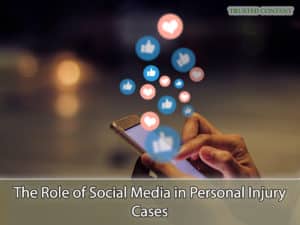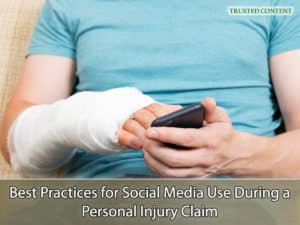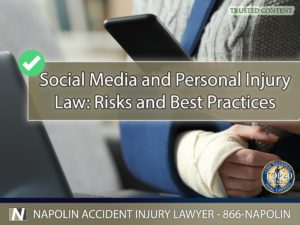Social Media and Personal Injury Law: Risks and Best Practices for Californians
Introduction to Social Media and Personal Injury Law: Risks and Best Practices for Californians
In the age of pervasive digital interconnection, social media has become an increasingly significant factor in personal injury law. In California, the use of social media during a personal injury claim has substantial implications, potentially swaying case outcomes in unexpected ways.

The Role of Social Media in Personal Injury Cases
The Role of Social Media in Personal Injury Cases
Social media platforms serve as both a daily journal and an open dialogue for many users. When a personal injury case is involved, these seemingly innocuous platforms can transform into a field of evidence that legal teams mine for information. For instance, a car accident victim seeking compensation for severe injuries may have their claim undermined if recent Facebook photos show them engaging in physical activities. This can create a perception of lessened injury severity, even when this isn't the case.
The Potential Risks of Social Media Use During a Personal Injury Claim
There are several potential pitfalls related to social media use in the context of a personal injury claim. Posts, photos, or comments that contradict the victim's claimed injuries or their impact can damage the credibility of the claim. For example, a California worker who claims severe back injury but posts photos on Instagram of a weekend hiking trip may face significant challenges in their case. Even a simple tweet about household chores could suggest a physical capability that contradicts the injury claim.

Best Practices for Social Media Use During a Personal Injury Claim
Best Practices for Social Media Use During a Personal Injury Claim
Adopting certain best practices can mitigate the risks associated with social media use during a personal injury claim. These guidelines include limiting new posts, enhancing privacy settings, and avoiding discussions about the case or injuries online. For example, a Californian injured at work might choose to post fewer updates and avoid mentioning their workplace accident, medical condition, or legal proceedings. However, the safest course of action is to abstain from social media use altogether during the claim process.
California Law and Social Media Evidence
California law, like many jurisdictions, allows the use of social media evidence in court under certain circumstances. Posts can be admissible if they are relevant, authentic, and not overly prejudicial. For instance, in a notable California case, a personal injury victim's claim was significantly devalued when social media posts contradicted their assertions of severe pain and suffering.

Social Media and Personal Injury Law: Risks and Best Practices for Californians
Conclusion to Social Media and Personal Injury Law: Risks and Best Practices for Californians
Social media has a significant and potentially detrimental role in personal injury law in California. By understanding the risks and implementing best practices, claimants can navigate the challenging landscape of social media use during personal injury claims.
If you've been injured and need legal help, Napolin Accident Injury Lawyer is ready to assist. With extensive litigation experience in personal injury law, our team is prepared to help secure the compensation you deserve. Call us at (866)-NAPOLIN for a free consultation. Our understanding of the complexities of social media and personal injury law can be your asset in pursuing justice.
- Understanding Uber Accidents and Insurance Coverage Periods in California - April 8, 2025
- A Guide on Red Light Auto Accidents in California - August 14, 2024
- Self-Representing in a California Personal Injury Claim - August 13, 2024
